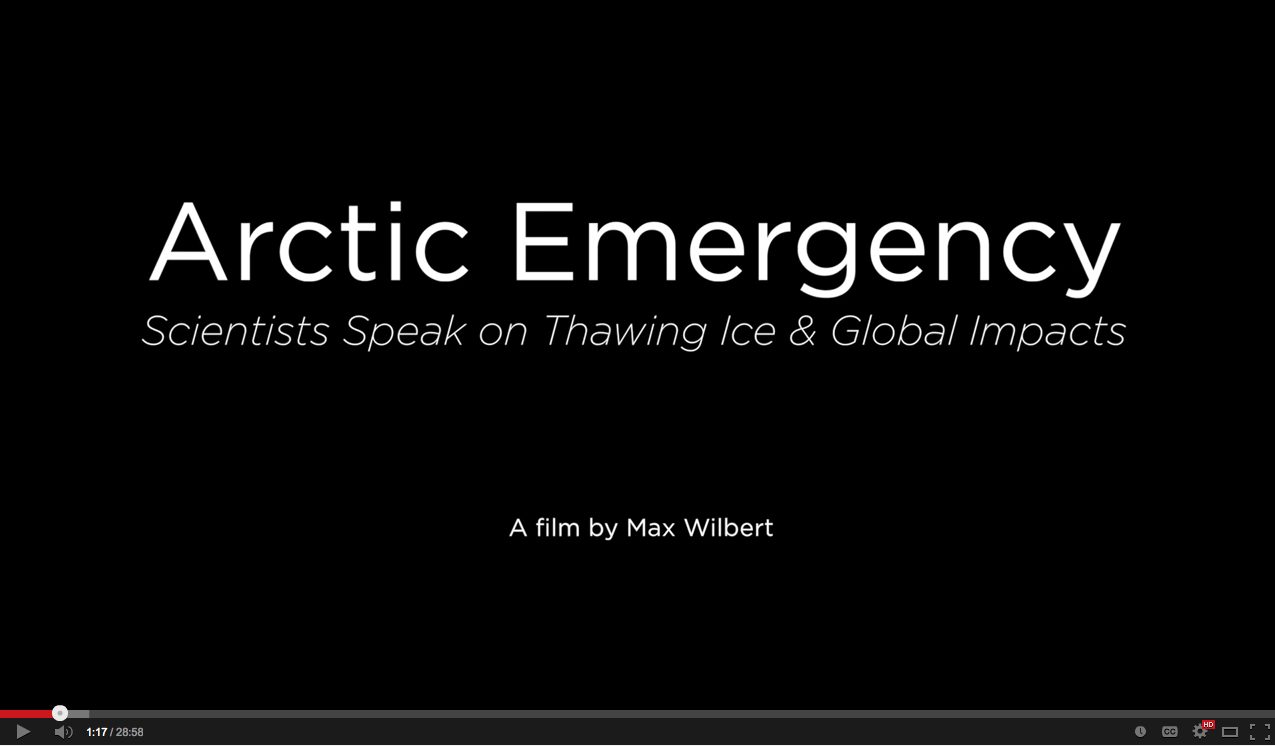by Deep Green Resistance News Service | Jan 16, 2015 | Defensive Violence, Obstruction & Occupation
By Mongabay
Indigenous leaders are calling for the release of six tribesmen implicated in a raid on an oilfield in Eastern Ecuador that left six soldiers injured, reports Andina and El Comercio.
According to Ecuador’s defense ministry, on January 6th a group of Waorani (Huaorani) tribesmen armed with spears, bows and arrows, blowguns, and firearms seized a facility run by Petrobell in Arajuno canton, in Pastaza province. The action shut down production at the oilfield, which normally produces 3,200 barrels a day.
The army then stormed the facility, resulting in clashes that led to six soldiers suffering gunshot wounds. No one was reported killed.
The defense ministry said the arrests were necessary to stop “looting” and disruption of oil production. The Waorani have been in custody since then.
However Franco Viteri, head of the Confederation of Indigenous Nationalities of the Ecuadorian Amazon (CONAIE), is calling for the men to be released, arguing that they were defending their traditional territory from incursions by oil companies, which have caused substantial damage to forests and indigenous communities in eastern Ecuador in recent decades.
“For 40 years, oil companies, with the consent of the State, have been smashing, looting and sabotaging the good life of indigenous peoples, disrupting the lifestyle of the Waorani people, a situation that has… escalated conflicts,” he said in a statement.
Petrobell is a subsidiary of Synergy Group Corp., a conglomerate headquartered in Brazil.
From Mongabay: “Amazon tribe attacks oilfield in Ecuador“
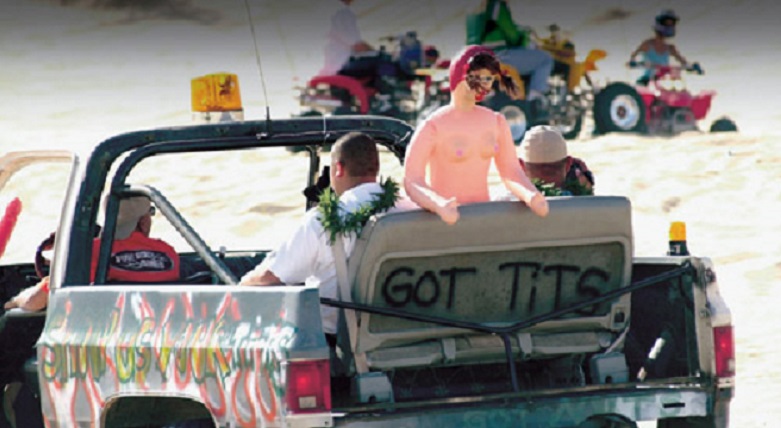
by DGR Colorado Plateau | Jan 7, 2015 | Biodiversity & Habitat Destruction
By Michael Carter / Deep Green Resistance Colorado Plateau
Imagine a time when you never once worried about losing your home or your means of making a living. Imagine your community used to be prosperous and well-run, providing everything you needed. You never gave a thought to giving back to it, though you always did and everyone else did, too. It hasn’t been this way for a long time—an invasion of thieves and murderers has taken all that away—but you remember what life was like.
The land is now impoverished by an unwelcome, occupying culture so self-important that they take everything without shame or even thought. These aliens have built their roads, power lines, and reservoirs all around you, siphoning every bit of your community’s resources for their own purposes. You have no recourse when an oil rig is set up in your town’s park, hospital, or swimming pool. You are helpless when they cut your watershed forest. There is nothing you can do about it, so you and your parents and your children and everyone else you know struggle on with no police to protect your health or property, no court to hear your grievance. You’d turn to your neighbors for help, but they’re in the same situation. The occupiers are everywhere, and they are all-powerful.
It’s not enough they’ve poisoned your water, built roads through your desert, and grazed their cattle across your range, stripping the grass from the ground which whips up into gritty brown curtains in the smallest wind. Many of your friends have been shot and left to rot in the street, but this doesn’t trouble the invaders; indeed, some of your children have been taken and kept in cages for their amusement. Now they want what’s left. They want everything, every inch of ground that once gave you all the wealth you ever wanted, all you could ever want.
In this dusty fragment that once was rich and whole, you barely get enough to eat and often feel ill because the water tastes of some sharp chemical. One day, engine noise comes from where no one has heard it before. Not along the ribbons of pavement where your kin are occasionally crushed to death, but in the last sad vestige of the flowering provident earth you’ve always loved. The machines come in packs. Aliens guide them over hills and through streams, muddying the water you and your children must drink. They roll over your friend’s house and you can hear them screaming inside, see their torn bodies, their bones stirred into the wreckage, smell their blood. You run away in pure bright panic as the machines veer insanely this way and that, destroying the neighborhood you grew up in. You might get away, but very likely you won’t. If you’re noticed at all, the end of your life will only be entertainment for the one who takes it.
This is what off road vehicles do.

Coyote Canyon
Coyote Canyon and Other Sacrifices
Coyote Canyon is a small rocky tributary to Kane Springs Creek on Bureau of Land Management property just south of Moab, Utah. It recently became another off road vehicle (ORV) trail. Like many such trails, it began illegally when specialized, expensive ORVs called “rock crawlers” began using it without BLM authorization. ORV users prompted the BLM to write an Environmental Analysis to make the route official, and now Coyote Canyon is in the BLM’s words “an extreme trail specifically designated for rock crawler-type vehicles only. The route is one-way up a small canyon and down another, and although it is only 0.65 miles long can easily take all day to navigate as refrigerator-sized boulders must be traversed. Only HEAVILY modified vehicles can make it through. This route provides rock crawler enthusiasts an opportunity to challenge both their rigs and skills in a unique setting.” [1] One of the main reasons ORVers wanted the “unique setting” is that a roll-over accident, not uncommon to rock-crawlers, won’t pitch the vehicle and its occupants off a cliff.
The noise and disturbance of ORVs fragment habitat and push public-lands policies toward more development by turning vague routes into established roads. In some instances ORVs are exclusively to blame for the endangerment of a species—such as at Sand Mountain, Nevada, formerly “Singing Sand Mountain” until it was overrun by machines churning to dust the habitat of the Sand Mountain blue butterfly. The Center for Biological Diversity writes that the butterfly “is closely linked to Kearney buckwheat; larvae feed exclusively on the plant, and adult butterflies rely on its nectar as a primary food source. Unfortunately, the Bureau of Land Management has allowed off-road vehicle use to destroy much of the Kearney buckwheat that once thrived on the dunes at Sand Mountain.” [2]
Land management agency inertia is easily the most immediate reason the ORVs have caused so much damage, since law enforcement is underfunded and policy-makers don’t make a priority of protecting the land and wildlife that’s entrusted to them. The Center for Biological Diversity had to sue the US Fish and Wildlife Service to even get a response to a petition to list the Sand Mountain blue butterfly under the Endangered Species Act, and the agency’s response was that they wouldn’t do it. “Not warranted.” In this case (and others such as manatees being killed by speedboats), there aren’t even any jobs being held hostage. This is recreation and nothing more, taking ever more animals, plants, and habitat from the biological legacy of the planet.

Desert Iguana, Sonoran Desert
The Utah Wilderness Coalition had this to say about off road vehicles: “Most public lands are unprotected from ORVs in Utah. Roughly seventy-five percent, or 17 million acres out of 23 million acres, of Bureau of Land Management (BLM) lands in Utah still lack any real protection (including designated routes, maps, trail signs, and other tools to ensure that these natural areas are protected) from ORV damage.
“Utah has over 100,000 miles of dirt roads, jeep trails, and old mining tracks. Driving all of these trails would be the equivalent of driving four times the circumference of the Earth.
“The BLM allows nearly uncontrolled ORV use in areas that have known but unrecorded archeological resources, putting these resources at risk from vandalism and unintentional damage. ORVs can cause damage to fragile desert soils, streams, vegetation, and wildlife. Impacts include churning of soils, distribution of non-native invasive plants, and increased erosion and runoff. Rare plant, wildlife, and fish species are at risk.
“ORV use is growing nationwide. In the past 30 years, the number of off-road vehicles in the United States has grown from 5 million to roughly 36 million ORVs. The BLM has fallen woefully behind in the management of these machines on public lands.” [3]
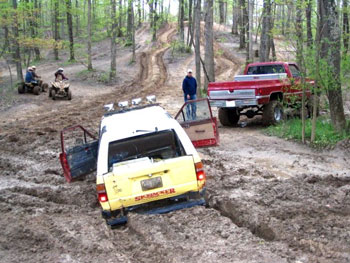
Image by Sierra Forest Legacy, http://www.sierraforestlegacy.org/FC_FireForestEcology/TFH_OHV.php
“The Best Trails are Illegal”
Because illegal ORV use is so dispersed, it’s rare for underfunded and understaffed public lands law enforcement to catch anyone in the act. Usually what they see—what anyone sees—are the long-lasting impacts (tire ruts, crushed vegetation) and not the machines themselves. Without any evidence, there can’t be any enforcement. If you complain to the BLM or Forest Service about illegal trails, this is the response you can expect. If you can catch someone in the act, a license plate number—especially if you can photograph it—will be helpful, but there’s still the underlying issue of it not being all that illegal in the first place. A fine isn’t much of a deterrent, particularly when it’s extremely unlikely to happen at all. [4] The 30 million-odd ORVers in the US alone probably won’t ever be fined for illegal trails.
One reason why opposition to ORVs and the destruction they cause is so feeble and inadequate is because opponents are portrayed by ORV groups as wealthy elitists trying to corner access to common lands at their expense. This human-centered framing entirely discards other beings’ lives that depend on the land and water at stake.
Unfortunately, potential defenders seem to be disarmed by this tactic. A kayaker I know once explained how she used to resent jet-skis and speedboats on the lakes she paddles on, but decided she was being selfish and to just accept it. But personal peace and quiet is somewhat beside the point. Oil and fuel spilled by gasoline boat engines is toxic to fish, birds, and invertebrates, and wakes from motorized watercraft swamp nesting birds such as the loon. In terrestrial habitat, as road density increases habitat security for large animals like bears and wolves decreases. Habitat effectiveness for elk, for example, falls steeply from a hundred percent where there are no roads to 50 percent with two road miles per square mile to 20 percent with six road miles. [5] Acceptance of the destruction wrought by others might make one feel nicer and ostensibly more democratic, but it means abandoning the defenseless.
The entitlement taken by the ORVers themselves is even more aggressive and unconcerned for life. A motorcyclist, enraged by new restrictions on off-roading in the Mojave Desert, shouted at me: “It’s the fucking desert! Nothing lives out there!” Anyone who’s spent time in the desert and seen the many reptiles, birds, mammals, and plants who live there knows this is ridiculous. The Mojave is the smallest desert in North America, and is being dissected by solar energy projects, military bases, and an ever-worsening ORV infection. Desert tortoises are being displaced to the point of extinction, followed by every other Mojave lizard, snake, and ground-nesting bird in the way of the dominant culture’s activities.
Even on private land, where ORV activity is considered trespassing, landowners are often frustrated by law enforcement’s ineffectiveness.
A California organization called Community ORV Watch advises: “Given current conditions, assistance in dealing with lawless OHV [off highway vehicle] activity in the vicinity of your home is more likely from the Sheriff’s Department than either the BLM or the California Highway Patrol. None of the three agencies consider unlawful OHV activity to be a high priority, so if you are to gain any benefit from an attempted contact with them it is important that you be willing to take the time and effort to see the call through. This isn’t always easy; responses are frequently hours late in arriving or do not come at all, so be prepared for a wait…this can be inconvenient, and it’s tempting to just let it slide rather than commit to a process that could tie you up for hours…
“By not calling, we participate in our own victimization by succumbing to a ‘what’s the use?’ attitude. This hurts community morale and perception over time, and lowers community expectations for services we are absolutely entitled to.” [6] This organization’s focus, the Morongo Basin in Southern California, is especially unfortunate to be near large population areas where there are lots of ORVers.
Remote areas have their own problems, and even law enforcement organizations are admitting they’re powerless to control ORV use in their jurisdictions. In a 2007 memo, an organization called Rangers for Responsible Recreation writes:
“The consensus of [law enforcement] respondents is that off-road vehicle violations have increased in recent years. Specifically: A majority of respondents (53%) say that ‘the off-road vehicle problems in my jurisdiction are out of control.’ Nearly three quarters (74%) agree that the off-road vehicle problems in their jurisdictions ‘are worse than they were five years ago.’ Fewer than one in six (15%) believe that ORV problems are ‘turning around for the better.’” [7]
GlorietaMesa.org, “an umbrella organization consisting of ranchers, horseback riders, hikers, environmentalists, wood-gatherers, residents, hunters and off-roaders, who are dedicated to protecting Glorieta Mesa from irresponsible Off-Road Vehicle recreation” writes:
“A 2002 Utah report reveals that a high percentage of riders prefer to ride ‘off established trails’ and did so on their last outing. Of the ATV riders surveyed, 49.4% prefer to ride off established trails, while 39% did so on their most recent excursion. Of the dirt bike riders surveyed, 38.1% prefer to ride off established trails, while 50% rode off established trails on their most recent excursion.
“More than nine out of ten (91%) of respondent rangers from the Bureau of Land Management (BLM) and the U.S. Forest Service (USFS) agree that off road vehicles represent ‘a significant law enforcement problem’ in their jurisdictions. According to one BLM respondent, ‘90% of ORV users cause damage every day they ride. Most will violate a rule, regulation or law daily.’” [8]
ORV damage is just another example of privileged access to limited and stolen resources, and it extends beyond the impacted land to the airborne dust that worsens early mountain snowmelt [9] and to the spread of invasive weeds. [10] Human communities are negatively affected, too. Moab merchants make many thousands of dollars on ORV tourism, but the menial jobs that support it are taxing and degrading. ORV tourists tip small or not at all, and are notoriously rude and spiteful. This is why Moab restaurant waiters call the annual “Jeep Week” ORV event “Cheap Week,” when you see hundreds of wealthy strangers swaggering around in t-shirts reading: the best trails are illegal.
Read How to Stop Off Road Vehicles, Part II
Endnotes
[1] “Coyote Canyon Motorized Route,” U.S. DEPARTMENT OF THE INTERIOR BUREAU OF LAND MANAGEMENT, accessed July 13, 2014,https://www.blm.gov/programs/recreation/passes-and-permits/lotteries/utah/coyotecanyon
[2] “Saving the Sand Mountain Blue Butterfly,” Center for Biological Diversity, accessed July 13, 2014,http://www.biologicaldiversity.org/species/invertebrates/Sand_Mountain_blue_butterfly/index.html
[3] “Protecting America’s Redrock Wilderness: THE FACTS ABOUT OFF-ROAD VEHICLE DAMAGE,” Utah Wilderness Coalition, accessed July 13, 2014,
[4] “One possible reason for this trend [in increased ORV violations] is a failure to provide sufficient penalties to offroad riders who are caught breaking the law. ‘Possibly the greatest weakness in the ORV enforcement program is the lack of bite in judicial penalties,’ wrote one ranger from the Bureau of Land Management. ‘There is often little penalty in not paying tickets. In California… you only have to pay tickets when you renew a license,’” “First-Ever Survey of Federal Rangers Shows ORVs Out of Control, Need for Tougher Penalties,” Rangers for Responsible Recreation, December 11, 2007,http://www.glorietamesa.org/RangersForResponsibleRecreation.pdf
[5] T. Adam Switalski and Allison Jones, eds., “Best Management Practices for Off-Road Vehicle Use on Forestlands: A Guide for Designating and Managing Off-Road Vehicle Routes,” Wild Utah Project, January 2008, http://www.wildearthguardiansresources.org/files/ORV_BMP_2008_0.pdf
[6] “Report ORV Abuse,” Community ORV Watch: Protecting Private and Public Lands From Off Road Vehicle Abuse, November 7, 2011, http://www.orvwatch.com/?q=node/5
[7] “First-Ever Survey of Federal Rangers Shows ORVs Out of Control, Need for Tougher Penalties,” Rangers for Responsible Recreation, December 11, 2007,http://www.glorietamesa.org/RangersForResponsibleRecreation.pdf
[8] “Facts About OHV (ORV) Use,” GlorietaMesa.org, accessed July 15, 2014,http://www.glorietamesa.org/ohv-orv-facts-sheet.php
[9] Andrew P. Barrett, National Snow and Ice Data Center, University of Colorado; Thomas H. Painter, University of Utah; and Christopher C. Landry Center for Snow and Avalanche Studies, “Desert Dust Enhancement of Mountain Snowmelt,” Feature Article From Intermountain West Climate Summary, July 2008, http://wwa.colorado.edu/climate/iwcs/archive/IWCS_2008_July_feature.pdf
[10] Thomas P. Rooney, “Distribution of Ecologically-Invasive Plants Along Off-Road Vehicle Trails in the Chequamegon National Forest, Wisconsin,” The Michigan Botanist, Volume 44, Issue 4, Fall, 2005, http://quod.lib.umich.edu/m/mbot/0497763.0044.402/1
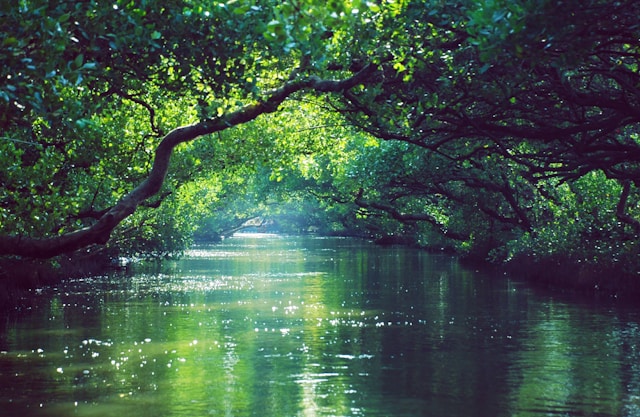
by DGR News Service | Sep 14, 2014 | Climate Change, NEWS
By Tom Bawden / The Independent
Carbon dioxide is being accumulated in the atmosphere at the fastest rate since records began, as scientists warn that the oceans and forests may have absorbed so much CO2 that their crucial function as “carbon sinks” is now severely threatened.
The jump in atmospheric CO2 is partly the result of rising carbon emissions as the world burns ever-more fossil fuels, according to the latest World Meteorological Organisation report, which finds the concentration of carbon increased by nearly three parts per million (ppm) to 396ppm last year.
But, crucially, preliminary data in the report indicates that the jump could also be attributed to “reduced CO2 uptake by the Earth’s biosphere” – the first time the effectiveness of the world’s great carbon sinks has been scientifically called into question.
Scientists said they were puzzled and extremely concerned by prospect of reduced absorption of the world’s oceans and plants, which they cannot explain and which threatens to accelerate the build-up of heat-trapping greenhouse gases in the atmosphere if the trend continues.
“That carbon dioxide concentrations continued to surge upwards last year is worrying news,” said Professor Dave Reay, of the University of Edinburgh.
“Of particular concern is the indication that carbon storage in the world’s forests and oceans may be faltering. So far these ‘carbon sinks’ have been locking away almost half of all the carbon dioxide we emit,” Professor Reay added.
“If they begin to fail in the face of further warming then our chances of avoiding dangerous climate change become very slim indeed.”
The plants and the oceans each typically absorb about a quarter of humanity’s CO2 emissions every year, with the other half going into the atmosphere, where it can remain for hundreds of years.
The last time there was a reduction in the biosphere’s ability to absorb carbon was in 1998, a year in which extensive forest fires and dry weather killed off lots of plants, dealing a blow to the world’s carbon sink.
But Dr Oksana Tarasova, chief of the atmospheric research division at the WMO, said this time it is much more worrying because there have been no obvious impacts on the biosphere this year.
“This problem is very serious. It could be that the biosphere is already at its limit, or it may be close to reaching it. Or it may be that it just becomes less effective at absorbing carbon. But it’s still very concerning,” said Dr Tarasova.
The worst-case scenario in which the carbon sink ceased to function at all would double the rate at which CO2 emissions accumulate in the atmosphere, significantly increasing the fallout of climate change, such as storms, droughts and temperature increases, Dr Tarasova said.
The latest WMO survey packed a second environmental punch – revealing that the oceans are currently acidifying at a rate that is unprecedented in the past 300 million years.
This is because they are absorbing about 4kg of carbon dioxide for every person on the planet, the report says.
The WMO’s findings intensified calls for co-ordinated global action to limit global warming to 2C, beyond which its consequences become increasingly devastating.
“We are running out of time. Past, present and future CO2 emissions will have a cumulative impact on both global warming and ocean acidification. The law of physics are non-negotiable,” said the WMO’s secretary-general Michel Jarraud. He added that, rather than rising, fossil fuel and other emissions badly need to come down.
Read more from The Independent: http://www.independent.co.uk/environment/carbon-dioxide-accumulates-as-seas-and-forests-struggle-to-absorb-it-9722224.html
Photo by Tienko Dima on Unsplash
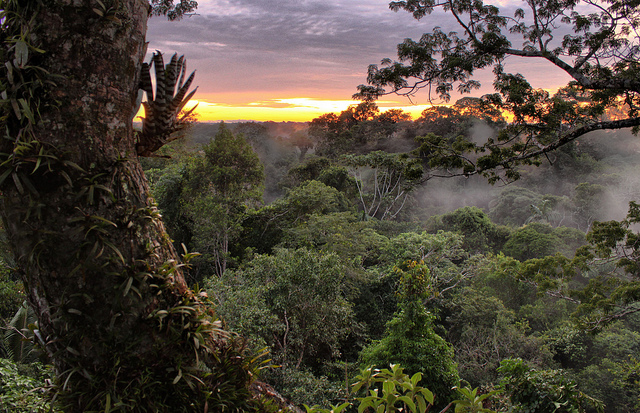
by DGR News Service | May 22, 2014 | Indigenous Autonomy, Mining & Drilling
By Agence France-Presse
The license comes just days after a petition for a referendum on the project was rejected by the country’s election authorities.
The action, signed by Environment Minister Lorena Tapia, gives a state company, Petroamazonas, rights to develop an oil field in part of the forest designated a UNESCO Biosphere Reserve.
Home to two indigenous tribes that have resisted contact with the outside world, the rainforest park covers an expanse of more than 9,800 square kilometers [3784 square miles] between two rivers.
The field, known as Tiputini, is part of a vast bloc that lies partially within the park with proven reserves of 920 million barrels of crude.
Petroamazonas was also granted a license to develop the Tambococha field, which lies outside the park but within the same oil development bloc.
Yasunimos, an environmentalist group, has fought government plans to open the park to oil development, gathering what it said were nearly 728,000 signatures on a petition to put it to a referendum.
But on May 9, Ecuador’s National Electoral Council invalidated half the signatures and rejected the petition, clearing the way for Thursday’s action.
The decision, however, could be appealed to the country’s constitutional court.
In October, Ecuador’s Congress approved a government plan to develop the Yasuni oil reserves, on the promise that revenues would be used to eradicate poverty.
From Physorg: http://phys.org/news/2014-05-ecuador-oil-amazon-reserve.html






